
Real Estate: Headwinds Abound
When we last checked in on the Real Estate sector, we made the case that the trend was neutral if the price was between support at 280 and the 50-day moving average. That remains the case today, but there has been no lack of volatility in the interim.
The key development over the past week is that the group held important support at the 280 level after the bears tried to press the case to the downside. This is a sign that the bulls will not give up without a fight. However, it is hard to make a strong bullish case until the 50-day moving average is reclaimed.
On a relative basis, Real Estate is below the 50-day moving average and trapped in a consolidation zone. Given the volatility in the equity market since the start of the year, it is a bit of a surprise to see this “defensive” sector not turning in a better relative showing. There are certainly worse relative trends in the market currently, but we want to better understand what could be plaguing Real Estate.
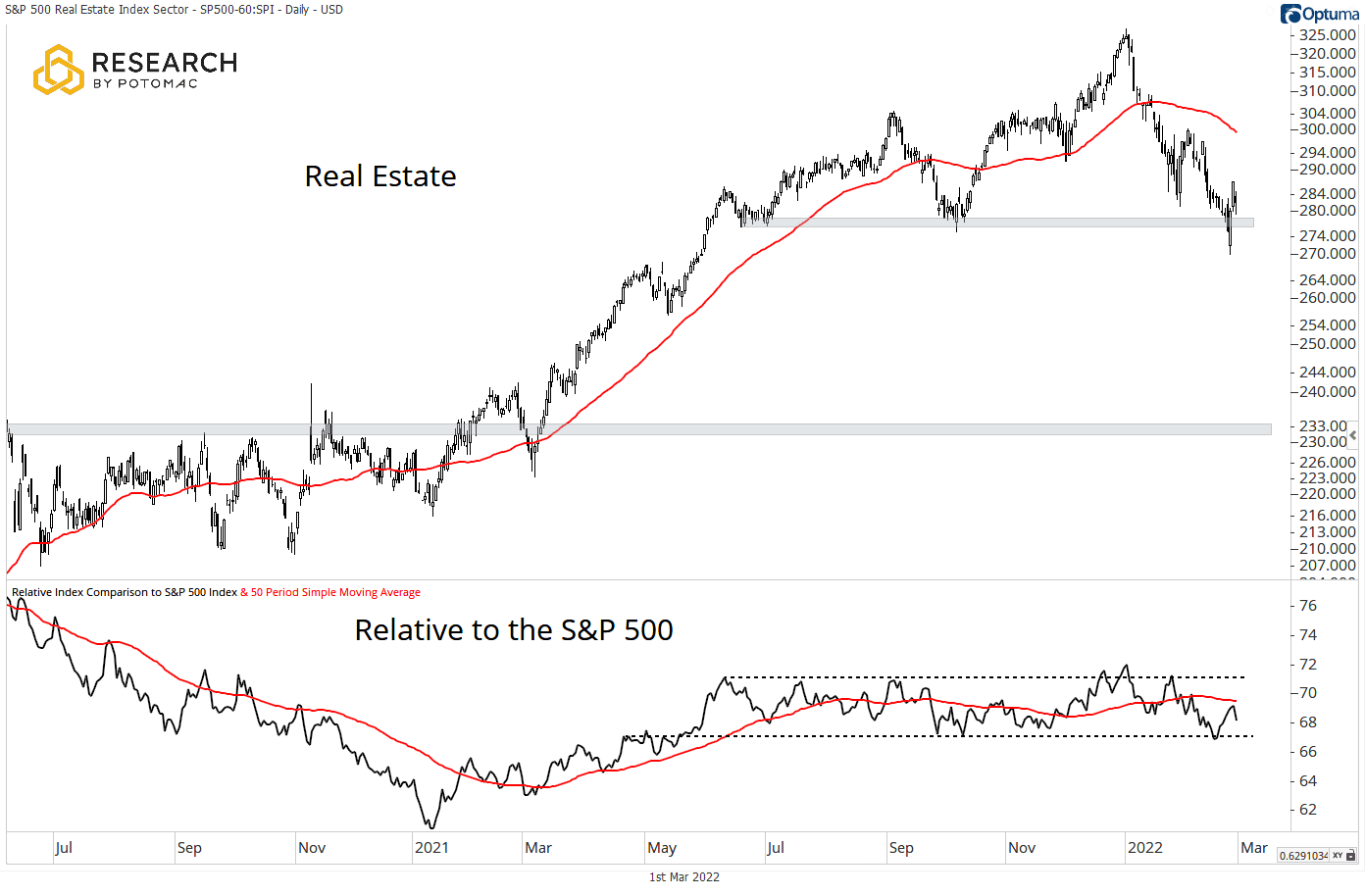
When looking at the relative trend for Real Estate, one possible explanation for the lack of a better trend in the face of increased volatility could be the rise in interest rates. Over the past ten years, the rolling 63-day (three months of trading) correlation between the relative performance of Real Estate and the 10-Year Yield has mostly been negative, meaning as rates rise, Real Estate tends to underperform the S&P 500.
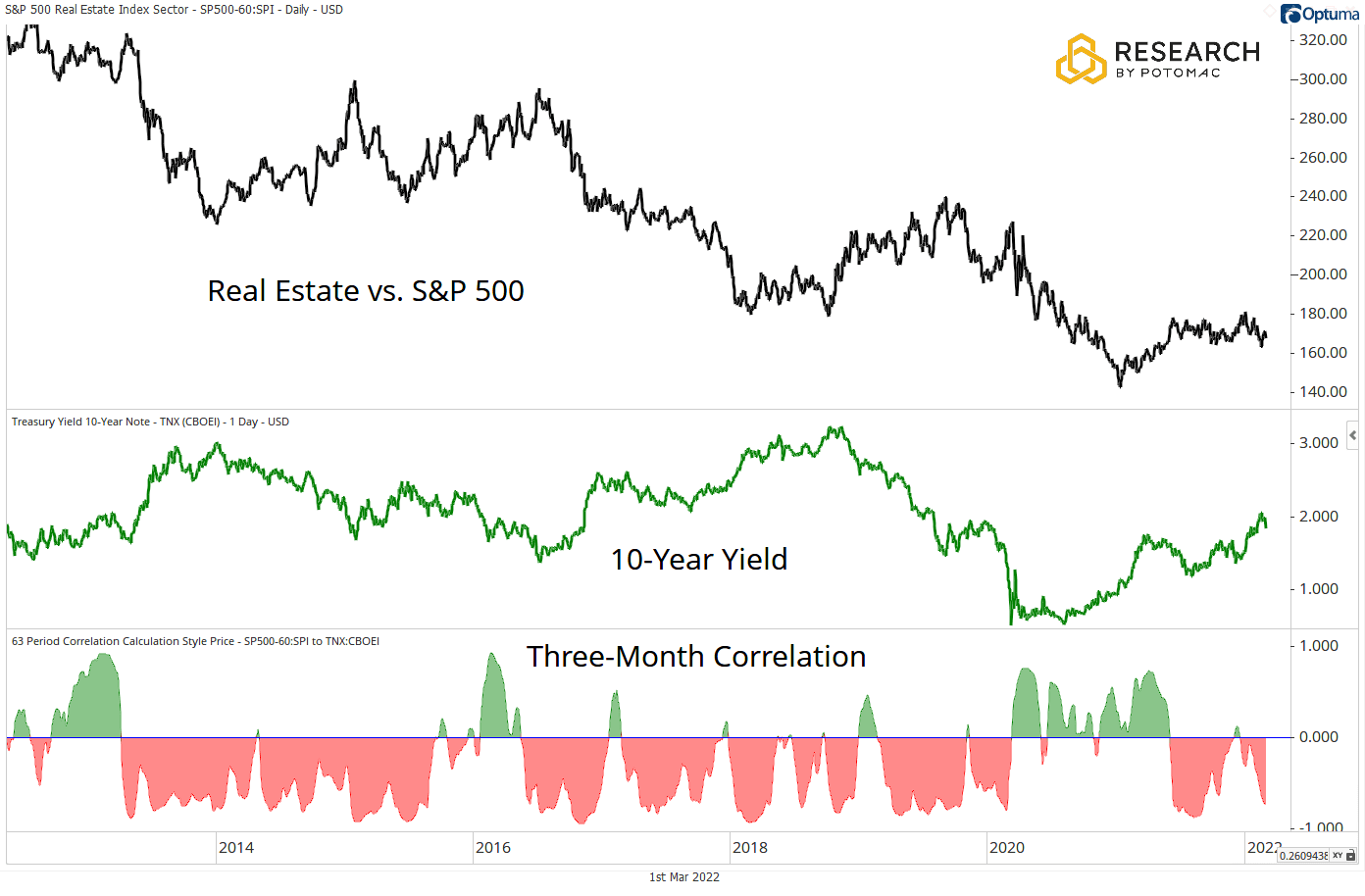
While correlations can and do break down from time to time (see the short bouts of green), it stands to reason that higher interest rates could continue to negate some of Real Estate’s defensive properties.
Industry Trends
As with the broader sector, Real Estate Investment Trusts cut below important price-based support before staging a rebound to close above. The index remains below the declining 50-day moving average. It is hard to make a bullish argument until the 295 level is reclaimed.
Relative to the broader sector, the group is oscillating around the 50-day moving average, unable to gain much traction in either direction.
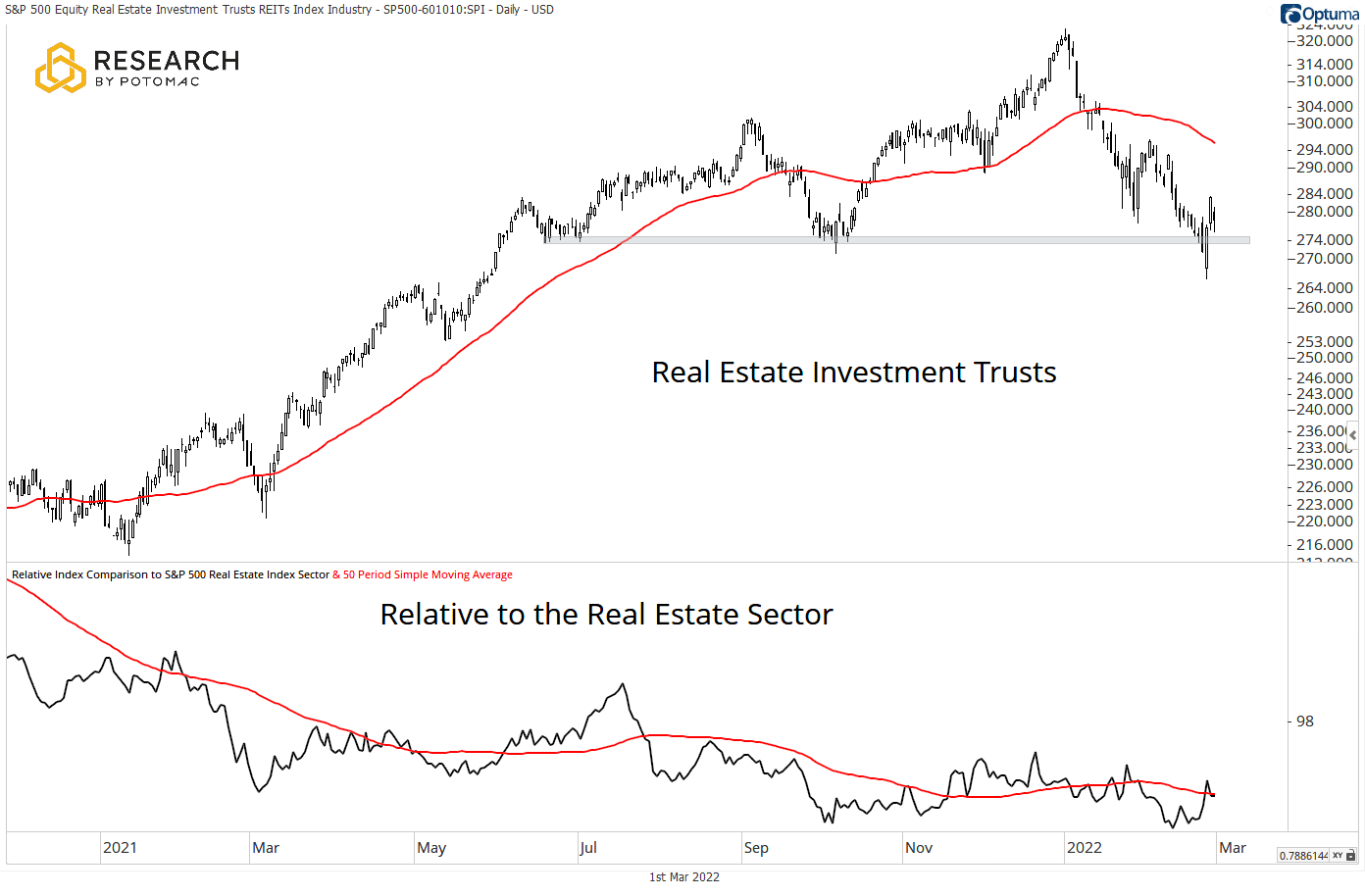
Real Estate Management and Development was not immune to selling pressure, but it has held up better than Real Estate Investment Trusts. This group did not breach support on the recent move lower in price. However, this appears to be a consolation prize, as the price is below a declining 50-day moving average.
Relative to the Real Estate Sector, the group is in consolidation near the highs. We would like to see a cleaner trend from the 50-day moving average.
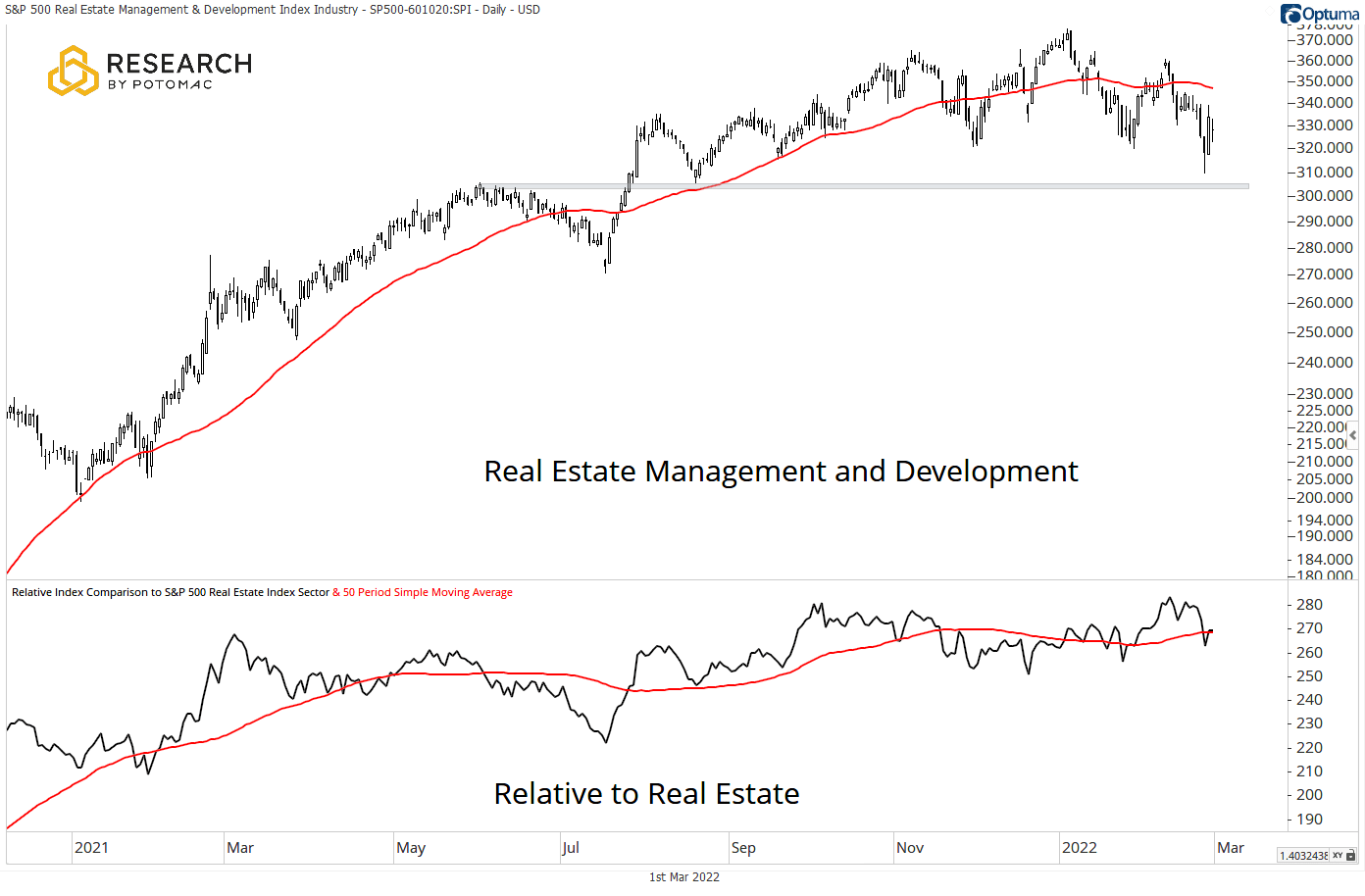
Breadth
Another issue that could be impacting the group is a lack of participation from an intermediate-term trend perspective. The percentage of stocks in the sector trading above their respective 50-day moving averages has seen a steep decline since the start of the year. On January 4th, more than 90% of the stocks in the group were trading above the 50-day moving average. Last week saw readings below 10%. The 10-day moving average of this metric now sits below 20%. There have been 238 days in the past 10-years when this has been the case. Over the next month of trading, Real Estate has outperformed the S&P 500 50% of the time and underperformed 50% of the time.
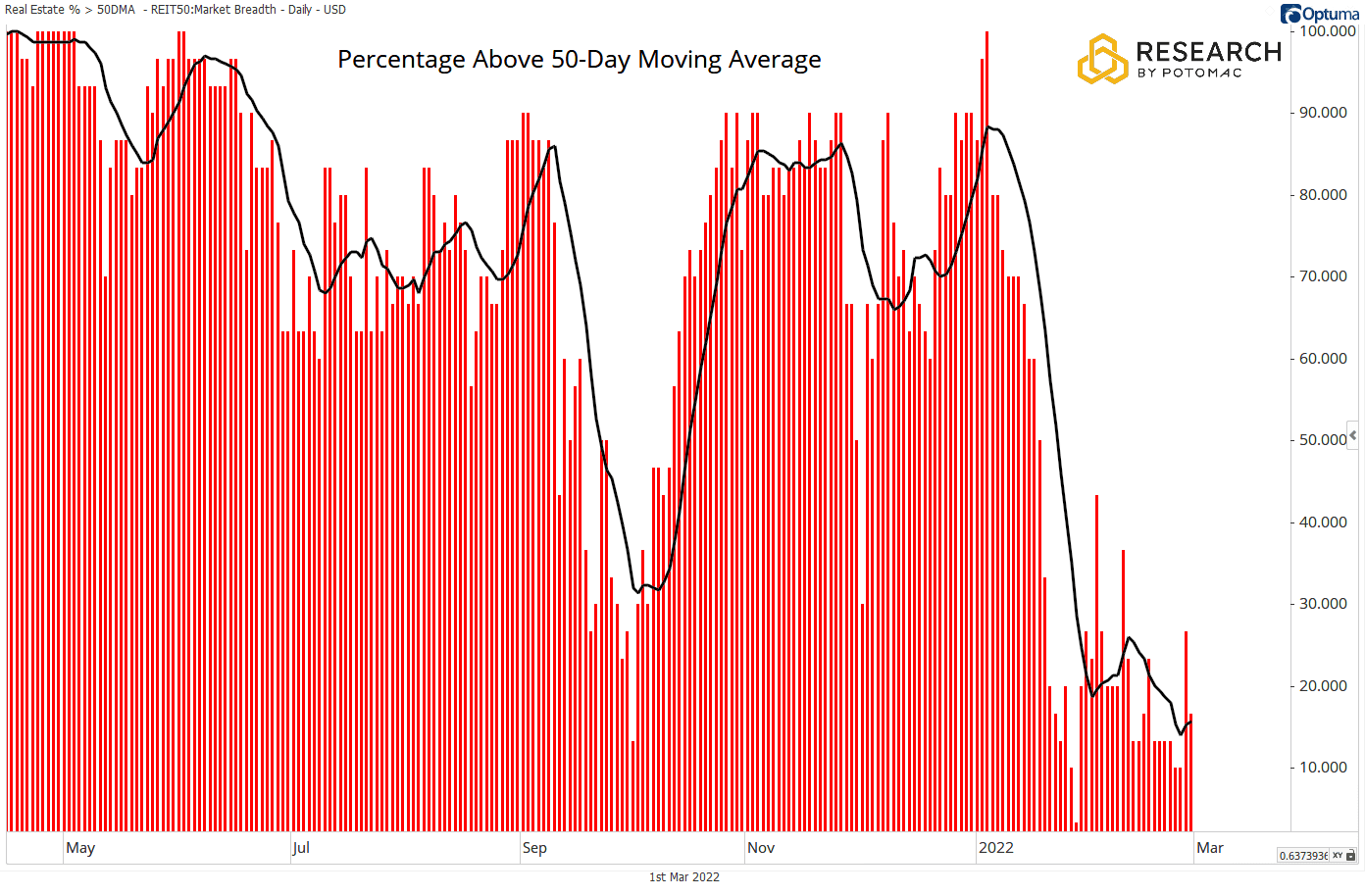
Intermediate trends aren’t the only breadth area that has been struggling recently, as the percentage of Real Estate components trading above their 200-day moving average fell back below the 50% level in Monday’s trading session after making a valiant attempt at improvement at that level in last Friday’s trading session. There were 58 instances since 1999 where the percentage of stocks trading above their 200-day moving average crossed below the 50% level for a median loss in the Real Estate sector of -2.58% and was lower 54.72% over the time following quarter of trading.
Disclosure: This information is prepared for general information only and should not be considered as individual investment advice nor as a solicitation to buy or offer to sell any securities. This material does not constitute any representation as to the suitability or appropriateness of any investment advisory program or security. Please visit our FULL DISCLOSURE page.
